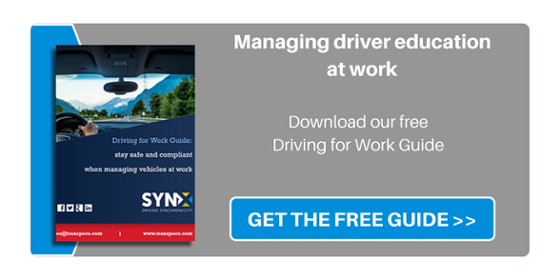
When it comes to dealing with how a driving team operates a fleet and executes the typical tasks of its profession, whether delivering goods or prospecting for potential customers or, again, working as a service provider, most fleets state that training and driver education are highly important. Training is mostly undertaken when new things come up such as new processes and vehicles rather than as a refresher on the Highway Code or a simple check if driver education has been effective or updated over the years.
Driver education consists in learning about driving from a theoretical point of view, while training focuses more on how a team should drive so as to respect safety and ultimately manage fuel consumption. They are not completely separated of course, despite driver education seemingly harking back to school days. You can take this logic and apply it to fleet safety. Safety education teaches drivers the importance of taking safety seriously, the techniques of defensive driving, and tests the ‘what’ of safe driving. Safety training, on the other hand, puts a driver behind the wheel (or some simulation thereof) and applies the education: learning what pressure to apply to a brake pedal, how far to turn the wheel, how to use the mirrors, and how to react in an emergency—the ‘how’ of safety.
During recent periods, authorities have reiterated the importance of training and education. In the UK, more than 1.4 million drivers, including more than one million caught for speeding, were sent to offender retraining courses in 2017 by the police—a measure that is actively used in the UK. Whichever drivers are found committing a driving offence can be offered a training course as an alternative to prosecution. On another note, FTA Ireland, the country’s most active membership association for the logistics industry, has called on the Department of Transport and the Road Safety Authority to increase funding for education and awareness campaigns for all road users. According to the FTAI, the focus must be on education and awareness, and that includes periodically reviewing the ‘rules of the road’, as every road user (and probably mostly those driving professionally) has a responsibility to educate themselves about the potential risks involved in driving.
Fleet organisations should probably start with driver education and follow up by reinforcing the theory with training. By the time they are hired by the company, most drivers have received some level of safety education, but likely not training specific to that education. Newly hired employees to be assigned company vehicles should be the starting point for driver education, and most of them probably would have not gotten additional training since their licence courses. Although this is certainly part of learning to drive safely, the responsibilities that come with driving a company-provided vehicle go beyond initial training.
These are some of the items that might be included at the start of an education program— we can probably classify them as basics:
- Why and under what criteria the company provides a vehicle.
- Personal use rules.
- The employee's responsibilities in carrying out proper vehicle care.
- How accidents/violations are classified (chargeable/non-chargeable), and what the consequences are if chargeable accidents occur.



